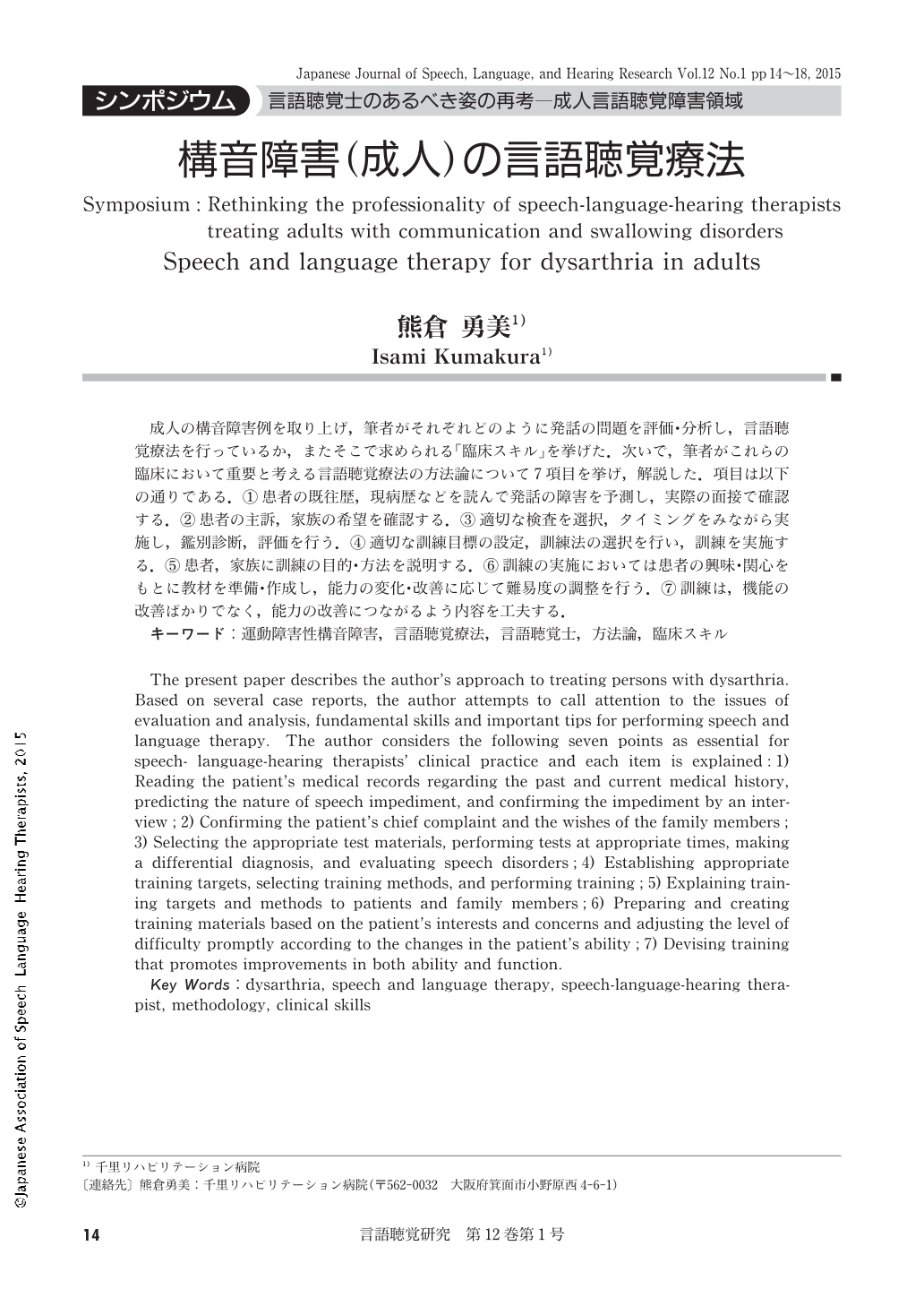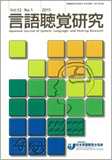Japanese
English
- 有料閲覧
- Abstract 文献概要
- 1ページ目 Look Inside
成人の構音障害例を取り上げ,筆者がそれぞれどのように発話の問題を評価・分析し,言語聴覚療法を行っているか,またそこで求められる「臨床スキル」を挙げた.次いで,筆者がこれらの臨床において重要と考える言語聴覚療法の方法論について7項目を挙げ,解説した.項目は以下の通りである.①患者の既往歴,現病歴などを読んで発話の障害を予測し,実際の面接で確認する.②患者の主訴,家族の希望を確認する.③適切な検査を選択,タイミングをみながら実施し,鑑別診断,評価を行う.④適切な訓練目標の設定,訓練法の選択を行い,訓練を実施する.⑤患者,家族に訓練の目的・方法を説明する.⑥訓練の実施においては患者の興味・関心をもとに教材を準備・作成し,能力の変化・改善に応じて難易度の調整を行う.⑦訓練は,機能の改善ばかりでなく,能力の改善につながるよう内容を工夫する.
The present paper describes the author's approach to treating persons with dysarthria. Based on several case reports, the author attempts to call attention to the issues of evaluation and analysis, fundamental skills and important tips for performing speech and language therapy. The author considers the following seven points as essential for speech- language-hearing therapists' clinical practice and each item is explained:1) Reading the patient's medical records regarding the past and current medical history, predicting the nature of speech impediment, and confirming the impediment by an interview; 2) Confirming the patient's chief complaint and the wishes of the family members; 3) Selecting the appropriate test materials, performing tests at appropriate times, making a differential diagnosis, and evaluating speech disorders; 4) Establishing appropriate training targets, selecting training methods, and performing training; 5) Explaining training targets and methods to patients and family members; 6) Preparing and creating training materials based on the patient's interests and concerns and adjusting the level of difficulty promptly according to the changes in the patient's ability; 7) Devising training that promotes improvements in both ability and function.

Copyright © 2015, Japanese Association of Speech-Language-Hearing Therapists. All rights reserved.


